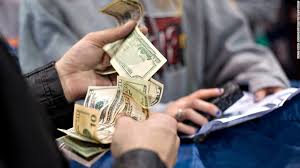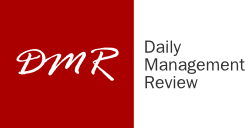
Expectations of an interest rate increase in December could be diminished by the data of U.S. consumer spending which showed that annual inflation increased at its slowest pace since late 2015 with a rise on consumer spending that was less than expected in July.
Creating a conundrum for the Federal Reserve is the fact that even as the labor market is near full employment, inflation remains stubbornly low. Amid a tightening job market, a small increase in new applications for unemployment benefits last week was showed by other data on Thursday.
After a 0.2 percent gain in June, consumer spending, which accounts for more than two-thirds of U.S. economic activity, increased 0.3 percent last month, the Commerce Department said. Consumer spending rising 0.4 percent in July was forecast by economists.
Edging up 0.1 percent in July was the personal consumption expenditures (PCE) price index excluding food and energy. And rising by the same margin for three straight months was the so-called core PCE price index, which is the Fed’s preferred inflation measure.
Noting the smallest gain since December 2015, the core PCE price index increased 1.4 percent in the 12 months through July. That followed a 1.5 percent rise in the 12 months through June. The U.S. central bank’s 2 percent target for the past five years was undershot by the core PCE price index.
Doubts on whether the Fed will increase interest rates at its December policy meeting, as most economists expect, were cast by the combination of moderate consumer spending and tepid inflation.
Next month, announcement of a plan to start reducing its $4.2 trillion portfolio of Treasury bonds and mortgage-backed securities is expected to be made by the Fed.
While the dollar pared gains against a basket of currencies, prices of U.S. Treasuries rose slightly after the data.
After gross domestic product increased at a 3.0 percent annualized rate in the April-June period, the fastest in more than two years, the economy got off to a strong start in the third quarter, suggests the consumer spending report.
Robust consumer spending buoyed growth in the second quarter. Consumer spending should be further supported by the continuing strength of the labor market.
Initial claims for state unemployment benefits increased by 1,000 to a seasonally adjusted 236,000 for the week ended Aug. 26, the Labor Department said in a separate report on Thursday.
There was a fall by 1,250 to 236,750 last week, the lowest reading since May in the four-week moving average of claims, considered a better measure of labor market trends as it irons out week-to-week volatility.
Motor vehicles and a range of other products were bought more by consumers in July. Compared to the prior two months, outlays on services slowed slightly. A rebound in incomes supported consumer spending last month. After being unchanged in June, personal income increased 0.4 percent last month.
Wages and salaries advanced 0.5 percent. But marking the lowest level since December 2016, from $515.7 billion in the prior month. savings fell to $510.2 billion in July.
(Source:www.reuters.com)
Creating a conundrum for the Federal Reserve is the fact that even as the labor market is near full employment, inflation remains stubbornly low. Amid a tightening job market, a small increase in new applications for unemployment benefits last week was showed by other data on Thursday.
After a 0.2 percent gain in June, consumer spending, which accounts for more than two-thirds of U.S. economic activity, increased 0.3 percent last month, the Commerce Department said. Consumer spending rising 0.4 percent in July was forecast by economists.
Edging up 0.1 percent in July was the personal consumption expenditures (PCE) price index excluding food and energy. And rising by the same margin for three straight months was the so-called core PCE price index, which is the Fed’s preferred inflation measure.
Noting the smallest gain since December 2015, the core PCE price index increased 1.4 percent in the 12 months through July. That followed a 1.5 percent rise in the 12 months through June. The U.S. central bank’s 2 percent target for the past five years was undershot by the core PCE price index.
Doubts on whether the Fed will increase interest rates at its December policy meeting, as most economists expect, were cast by the combination of moderate consumer spending and tepid inflation.
Next month, announcement of a plan to start reducing its $4.2 trillion portfolio of Treasury bonds and mortgage-backed securities is expected to be made by the Fed.
While the dollar pared gains against a basket of currencies, prices of U.S. Treasuries rose slightly after the data.
After gross domestic product increased at a 3.0 percent annualized rate in the April-June period, the fastest in more than two years, the economy got off to a strong start in the third quarter, suggests the consumer spending report.
Robust consumer spending buoyed growth in the second quarter. Consumer spending should be further supported by the continuing strength of the labor market.
Initial claims for state unemployment benefits increased by 1,000 to a seasonally adjusted 236,000 for the week ended Aug. 26, the Labor Department said in a separate report on Thursday.
There was a fall by 1,250 to 236,750 last week, the lowest reading since May in the four-week moving average of claims, considered a better measure of labor market trends as it irons out week-to-week volatility.
Motor vehicles and a range of other products were bought more by consumers in July. Compared to the prior two months, outlays on services slowed slightly. A rebound in incomes supported consumer spending last month. After being unchanged in June, personal income increased 0.4 percent last month.
Wages and salaries advanced 0.5 percent. But marking the lowest level since December 2016, from $515.7 billion in the prior month. savings fell to $510.2 billion in July.
(Source:www.reuters.com)





